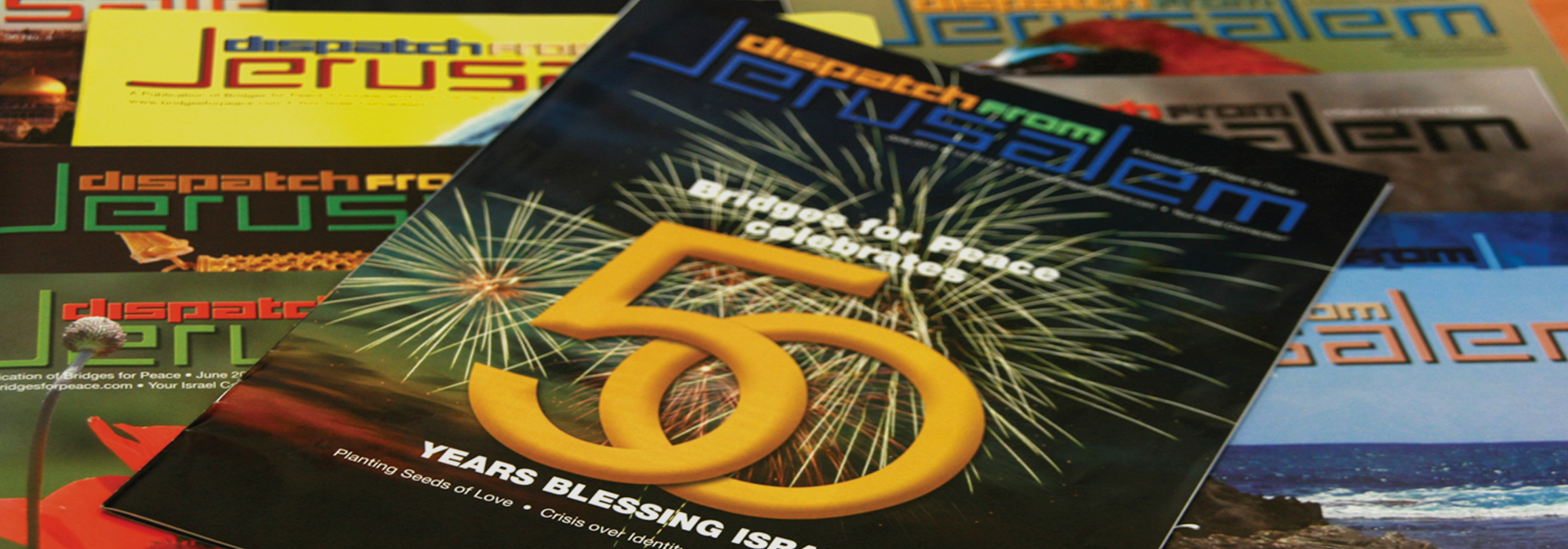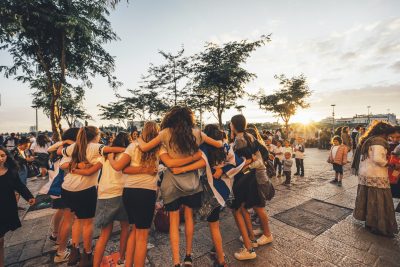
by: Jo Sarah Stanford, BFP Staff Writer
Israel’s Independence Day, Jerusalem. It is well past midnight, but the capital is more alive than ever. From the Old City to Jaffa Street—and all across the country—Israel celebrates. Standing on the crowded streets amid a thousand other revelers, it is easy to be swept up in the merriment. Foreigners and natives alike dance together and laugh and shout. The emotion is palpable. This is, after all, the day that commemorates Israel’s miraculous rebirth after nearly two millennia.
In some countries, a national holiday is little more than a day off from work and a chance to socialize with friends. In Israel, however, each celebration is intrinsically linked to its past. The Jewish nation has a tragic history of dispersion, exile, genocide, loss and heartache, yet still her people prevail. Israel’s holidays tell that story, adding a deep richness and greater meaning to the festivities.
 There are 12 major—and a number of other—celebrations in Israel. Some are biblical feasts, while others commemorate important events in Jewish history. In the run-up to each of these special days, the nation is abuzz with activity as people prepare to celebrate. In the weeks leading up to Pesach (Passover), houses, restaurants and shops are thoroughly cleaned to be rid of any leaven (yeast), while temporary booths spring up on every street corner before Sukkot (Feast of Tabernacles). On Purim (Feast of Esther), children and adults alike walk the streets in fancy dress, cheering each other on for their costumes. During Hanukkah (Festival of Lights), the dancing light of candles can be seen at front doors as families—and strangers—light the hanukkiah (nine-branched candelabra), sing songs and share food together. Even the weekly Shabbat (Sabbath) is a cause for celebration as families come together around the dinner table, rest from work and reflect on life. The passing of time is marked by these events.
There are 12 major—and a number of other—celebrations in Israel. Some are biblical feasts, while others commemorate important events in Jewish history. In the run-up to each of these special days, the nation is abuzz with activity as people prepare to celebrate. In the weeks leading up to Pesach (Passover), houses, restaurants and shops are thoroughly cleaned to be rid of any leaven (yeast), while temporary booths spring up on every street corner before Sukkot (Feast of Tabernacles). On Purim (Feast of Esther), children and adults alike walk the streets in fancy dress, cheering each other on for their costumes. During Hanukkah (Festival of Lights), the dancing light of candles can be seen at front doors as families—and strangers—light the hanukkiah (nine-branched candelabra), sing songs and share food together. Even the weekly Shabbat (Sabbath) is a cause for celebration as families come together around the dinner table, rest from work and reflect on life. The passing of time is marked by these events.
Some of the celebrations take on a more somber tone. Yom HaShoah (Holocaust Remembrance Day) commemorates the 6 million Jewish lives lost at the hands of the Nazis. Just before 10 a.m., people across Israel stop whatever they are doing and gather outside. Drivers park their cars on the side of the road, get out and stand beside them—waiting. At precisely 10 a.m., the air raid siren sounds. It wails for two whole minutes as the nation pauses to mourn and remember.
The following week, the siren sounds again for Yom HaZicharon (Memorial Day) in honor of the soldiers who died defending the Jewish state and Israelis killed in terror attacks. During her short history, Israel has fought many wars, and young soldiers daily defend her borders against those intent on her destruction. Everyone knows someone who has lost their life. The nation grieves together.
As the sun sets, the Jewish day ends and another begins. Directly following Yom HaZicharon is Yom HaAtzmaut (Independence Day). At the Western Wall, the flag which sat at half-mast in honor of the fallen is now hoisted high to proclaim the day that Israel became a modern nation. Mourning turns to joyous celebration and the streets are filled with dancing. Fireworks light up the night sky, and the sound of many concerts fills the air. Thousands of people join together, waving high the flag with the Star of David. The festivities last long into the night. Observing Memorial and Independence days so close together may seem at odds, but it is fitting that one directly follows the other, as it is only through the sacrifice of the fallen that the living are free in their own land.
Hanukkah 1932, Kiel, Germany. Rabbi Akiva Ponser and his family prepare to light the candles. Their hanukkiah is proudly displayed in the window. Across the street from their home is the Nazi headquarters, with the swastika flag unfurled. The rabbi’s wife, Rachel, was so struck by the contrast of the two symbols that she took a photo. On the back she wrote: “‘Death to Judah’ so the flag says. ‘Judah will live forever,’ so the light answers.”
Hitler came to power just one month later and soon celebrating the biblical festivals was forbidden. In the Nazi death camps, Dr Josef Mengele, known as the Angel of Death, deliberately marked the festivals as a time to send mass numbers to the gas chambers. As an act of defiance, the Jews still kept God’s command to celebrate, gathering whatever scraps they could find to commemorate the days set aside for celebration.
The Ponser family fled Germany in 1933. Today, the rabbi’s great-grandson lights the hanukkiah in Israel—the very same hanukkiah that blazed in defiance of the Nazi flag.
“A Jew doesn’t fight with a sword; he fights with light.” This is motivational speaker and internet personality Charlie Harary’s explanation for Israel’s tenacity to live life to the fullest, to choose celebration in the face of such a tragic history. Israelis know too well the value of life. Each festival reflects a chapter in the history of a people persecuted time and time again, yet still they prevail.
Proverbs 15:15 says, “All the days of the afflicted are evil, but he who is of a merry heart has a continual feast.” This is how Israel chooses to live each day. The celebration of life is part of their DNA. Whether standing in silent memorial or dancing in the streets, the Jewish people loudly proclaim: Am Yisrael Chai—the nation of Israel lives!
Photo Credit: Click on photos to see photo credit
All logos and trademarks in this site are property of their respective owner. All other materials are property of Bridges for Peace. Copyright © 2024.
Website Site Design by J-Town Internet Services Ltd. - Based in Jerusalem and Serving the World.